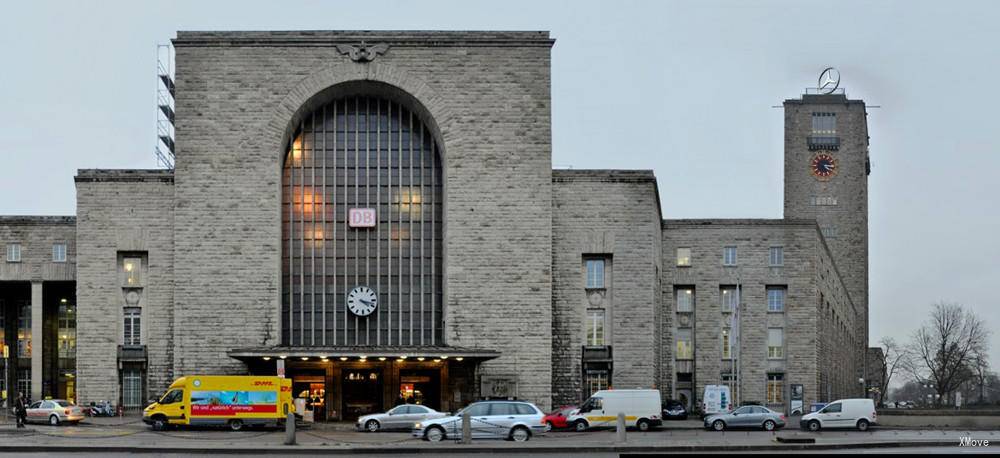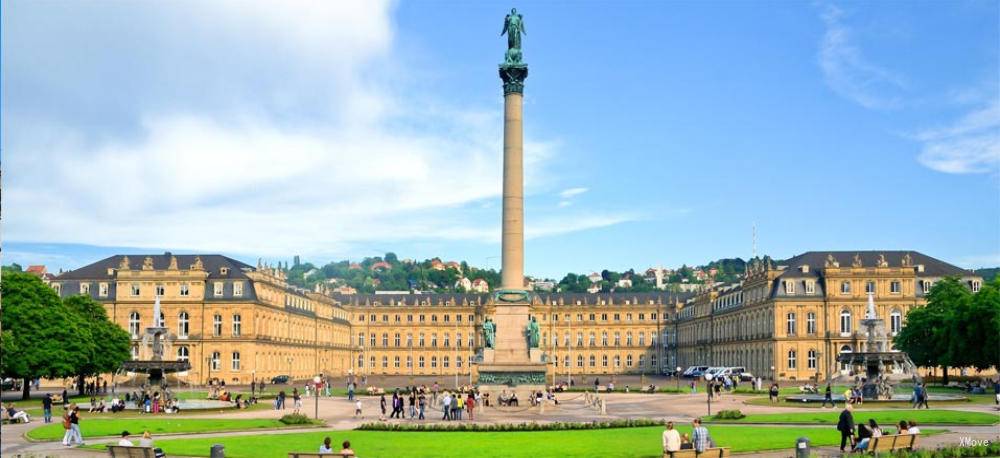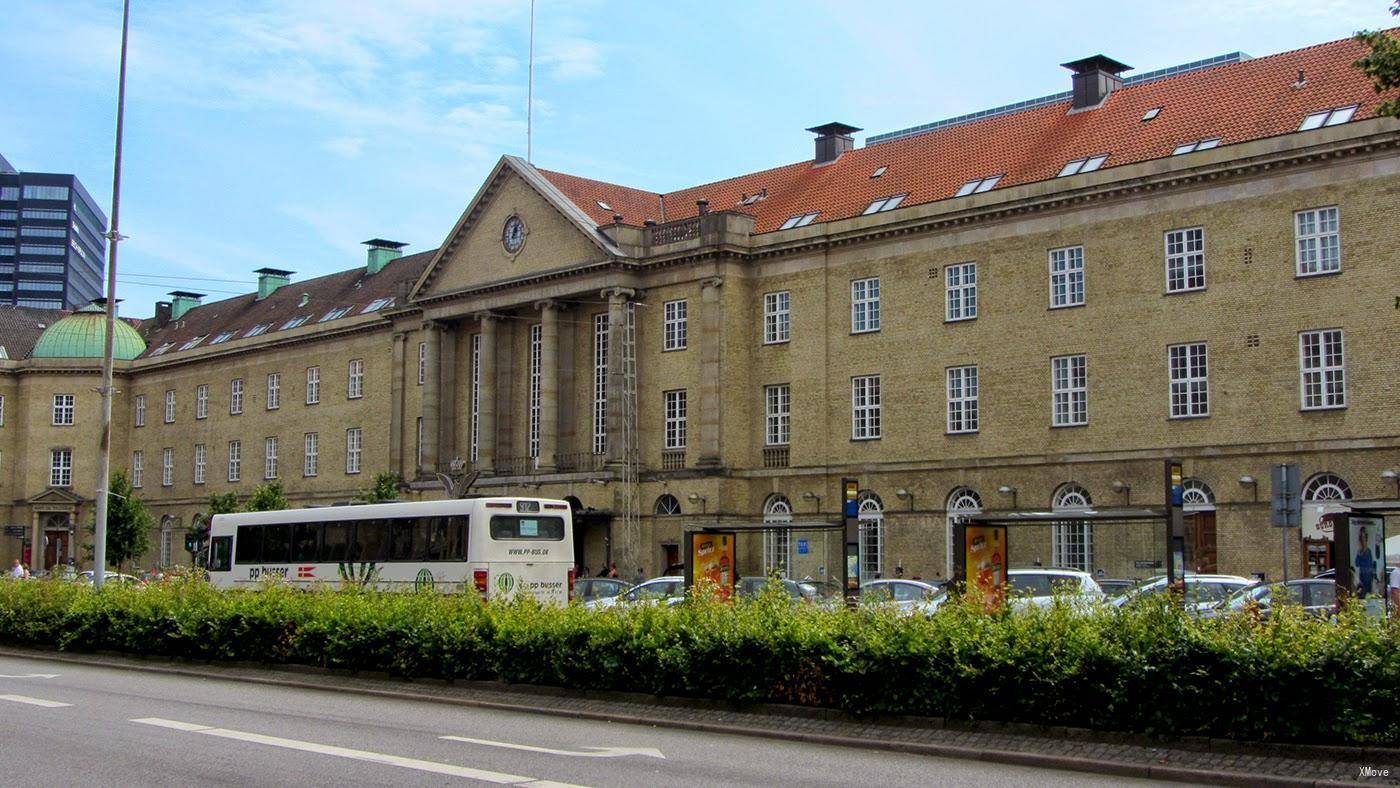Stuttgart Central to Aarhus: Trains, Buses, Fares, Today's Connections, Routes, Duration, Types of Trains, Station Guides, Tips, Journey
Germany Train Tickets
Scan QR code, download G2Rail App to see Stuttgart Central's more live update, station guide, plan and photos



Train schedule Stuttgart Central(Stuttgart Hbf) to Aarhus
Popular train routes departing from Stuttgart Central(Stuttgart Hbf)
* Frankfurt Central(Frankfurt(Main)Hbf)
* Lisbon(Lisboa)
* London
* Bruchsal
* Hamburg Central(Hamburg Hbf)
* Muenchen Pasing(München Pasing)
* Muenchen Flughafen Terminal 1(München Flughafen Terminal 1)
Popular train routes arriving in Stuttgart Central(Stuttgart Hbf)
* பிராங்பேர்ட் மத்திய நிலையம்(Frankfurt(Main)Hbf)
* ருட்லிங்கன் மத்திய நிலையம்(Reutlingen Hbf)
* பாரிஸ் கரே டி எல்(Paris Gare De L’est)
* கார்ல்ஸ்ரூ மத்திய நிலையம்(Karlsruhe Hbf)
* நியூரம்பெர்க் பிரதான நிலையம்(Nürnberg Hbf)
* மத்திய கோரிசியா(Gorizia Centrale)
* பீல்ஃபெல்ட் மத்திய நிலையம்(Bielefeld Hbf)
Popular train routes departing from Aarhus
* Mannheim Central(Mannheim Hbf)
* Frederikshavn St
* Köbenhavn H
* Berlin Central Station(Berlin Hbf)
* Copenhagen(Koebenhavn)
* Amsterdam Centraal
* Nuernberg Hbf(Nürnberg Hbf)
Popular train routes arriving in Aarhus
* Amersfoort
* Bydgoszcz Glowna
* Ramstein
* สถานีกลางดอร์ทมุนด์(Dortmund Hbf)
* ซูริค Hb(Zürich Hb)
* สถานีกลางฮันโนเวอร์(Hannover Hbf)
* Apeldoorn

Stuttgart Central
Stuttgart Hauptbahnhof is the main train station in Stuttgart, the capital of Baden-Württemberg in southwestern Germany. In 2009, he was selected as a UNESCO World Heritage List. You can get to the station by taking the light rail quick test S1/2/3/4/5/6/60. It can also be reached by subway U1/25/6/7/9/12/14/15. The Stuttgart train station is undergoing a major modernization.
Tourist cities that can be reached from Stuttgart such as Stuttgart → Metzingen Shopping Village. Stuttgart → Mercedes-Benz Mercedes-Benz Museum, Stuttgart → Freiburg, Stuttgart → Heidelberg.
Stuttgart Central - Station Guide | Departures and Arrivals | Popular Routes
Stuttgart ( SHTUUT-gart, also US: STU(U)T-; German: [ˈʃtʊtɡaʁt] ; Swabian: Schduagert [ˈʒ̊d̥ua̯ɡ̊ɛʕd̥]; names in other languages) is the capital and largest city of the German state of Baden-Württemberg. Stuttgart is located on the Neckar river in a fertile valley known locally as the "Stuttgart Cauldron". It lies an hour from the Swabian Jura and the Black Forest. Its urban area has a population of 634,830, making it the sixth largest city in Germany. 2.8 million people live in the city's administrative region and 5.3 million people in its metropolitan area, making it the fourth largest metropolitan area in Germany. The city and metropolitan area are consistently ranked among the top 20 European metropolitan areas by GDP; Mercer listed Stuttgart as 21st on its 2015 list of cities by quality of living, innovation agency 2thinknow ranked the city 24th globally out of 442 cities and the Globalization and World Cities Research Network ranked the city as a Beta-status world city in their 2014 survey.Since the 6th millennium BC, the Stuttgart area has been an important agricultural area and has been host to a number of cultures seeking to utilize the rich soil of the Neckar valley. The Roman Empire conquered the area in 83 AD and built a massive castrum near Bad Cannstatt, making it the most important regional centre for several centuries. Stuttgart's roots were truly laid in the 10th century with its founding by Liudolf, Duke of Swabia, as a stud farm for his warhorses. Initially overshadowed by nearby Cannstatt, the town grew steadily and was granted a charter in 1320. The fortunes of Stuttgart turned with those of the House of Württemberg, and they made it the capital of their county, duchy, and kingdom from the 15th century to 1918. Stuttgart prospered despite setbacks in the Thirty Years' War and devastating air raids by the Allies on the city and its automobile production during World War II. However, by 1952, the city had bounced back and it became the major economic, industrial, tourism and publishing centre it is today.Stuttgart is also a transport junction, and possesses the sixth-largest airport in Germany. Several major companies are headquartered in Stuttgart, including Porsche, Bosch, Mercedes-Benz, Daimler AG, and Dinkelacker.Stuttgart is unusual in the scheme of German cities. It is spread across a variety of hills (some of them covered in vineyards), valleys (especially around the Neckar river and the Stuttgart basin) and parks. This often surprises visitors who associate the city with its reputation as the "cradle of the automobile". The city's tourism slogan is "Stuttgart offers more". Under current plans to improve transport links to the international infrastructure (as part of the Stuttgart 21 project), the city unveiled a new logo and slogan in March 2008 describing itself as "Das neue Herz Europas" ("The new Heart of Europe"). For business, it describes itself as "Where business meets the future". In July 2010, Stuttgart unveiled a new city logo, designed to entice more business people to stay in the city and enjoy breaks in the area.Stuttgart is a city with a high number of immigrants. According to Dorling Kindersley's Eyewitness Travel Guide to Germany, "In the city of Stuttgart, every third inhabitant is a foreigner." 40% of Stuttgart's residents, and 64% of the population below the age of five, are of immigrant background.
Stuttgart - Guide, Attractions, Tours, Sightseeings | Train from/to Stuttgart | Popular RoutesAarhus (, also US: , Danish: [ˈɒːhuːˀs] ; officially spelled Århus from 1948 until 1 January 2011) is the second-largest city in Denmark and the seat of Aarhus municipality. It is located on the east coast of the Jutland peninsula, in the geographical centre of Denmark, 187 kilometres (116 mi) northwest of Copenhagen and 289 kilometres (180 mi) north of Hamburg, Germany. The inner urban area contains 273,077 inhabitants (as of 1 January 2018) and the municipal population is 340,421 (as of 2018). Aarhus is the central city in Business Region Aarhus and in the East Jutland metropolitan area, which had a total population of 1.378 million in 2016.The history of Aarhus began as a fortified Viking settlement founded in the 8th century and with the first written records stemming from the bishopric seated here from at least 948. The city was founded on the northern shores of a fjord at a natural harbour and the primary driver of growth was for centuries seaborne trade in agricultural products. Market town privileges were granted in 1441, but growth stagnated in the 17th century as the city suffered blockades and bombardments during the Swedish Wars. In the 19th century it was occupied twice by German troops during the Schleswig Wars but avoided destruction. As the industrial revolution took hold, the city grew to become the second-largest in the country by the 20th century. Today, Aarhus is at the cultural and economic core of the region and the largest centre for trade, services and industry in Jutland. The city ranks as the 92nd largest city in the European Union, and as number 234 among world cities. It is also a top 100 conference city in the world. Aarhus is the principal industrial port of the country in terms of container handling and an important trade hub in Kattegat. Major Danish companies have based their headquarters here and people commute for work and leisure from a wide area in Region Midtjylland. It is a centre for research and education in the Nordic countries and home to Aarhus University, Scandinavia's largest university, including Aarhus University Hospital and INCUBA Science Park. Being the Danish city with the youngest demographics, with 48,482 inhabitants aged under 18, Aarhus is also the second fastest growing Danish city, with an average growth of 4,500 people per annum since 2008.Aarhus is known for its musical history. In the 1950s, many jazz clubs sprang up around the city, fuelled by the young population. By the 1960s, the music scene diversified into rock and other genres. In the 1970s and 1980s, Aarhus became the centre for Denmark's rock music, fostering many iconic bands such as Kliché, TV-2 and Gnags. Aarhus is home to the annual eight-day Aarhus Jazz Festival, the SPoT Festival, and the NorthSide Festival. In 2017, Aarhus was European Capital of Culture along with Paphos in Cyprus.
Aarhus - Guide, Attractions, Tours, Sightseeings | Train from/to Aarhus | Popular Routes
Germany Train Tickets
Scan QR code, download G2Rail App to see Stuttgart Central's more live update, station guide, plan and photos



Hot Journeys
* Naples -> Rome(Roma)
* Oxford -> London(London)
* Seoul(서울) -> Jeonju Si(전주시)
* Milan -> Lucerne(Luzern)
* Barcelona -> Valencia
* Frankfurt -> Dusseldorf(Düsseldorf)
* Barcelona -> Madrid(Madrid)
* Lucerne(Luzern) -> Interlaken
* Milan -> Florence
* Interlaken -> Swiss Alps Jungfrau Aletsch
* Frankfurt Airport(Frankfurt Flughafen) -> Stuttgart
* Dusseldorf(Düsseldorf) -> Frankfurt Airport(Frankfurt Flughafen)
* Munich(Müchen) -> Frankfurt
* Bremen(Bremen) -> Freiburg Im Breisgau
* Swiss Alps Jungfrau Aletsch -> Lauterbrunnen
* Berlin(Berlin) -> Frankfurt
* Milan -> Venice(Venezia)
* Nice -> Paris
* Barcelona -> Madrid(Madrid)
* Cologne(Köln) -> Frankfurt
* Warsaw(Warszawa) -> Berlin(Berlin)
* Frankfurt -> Munich(Müchen)
* Turin(Torino) -> Milan
* Berlin(Berlin) -> Munich(Müchen)
* Frankfurt Airport(Frankfurt Flughafen) -> Cologne(Köln)
* Brussels(Bruxelles) -> Paris
* Rome(Roma) -> Milan

